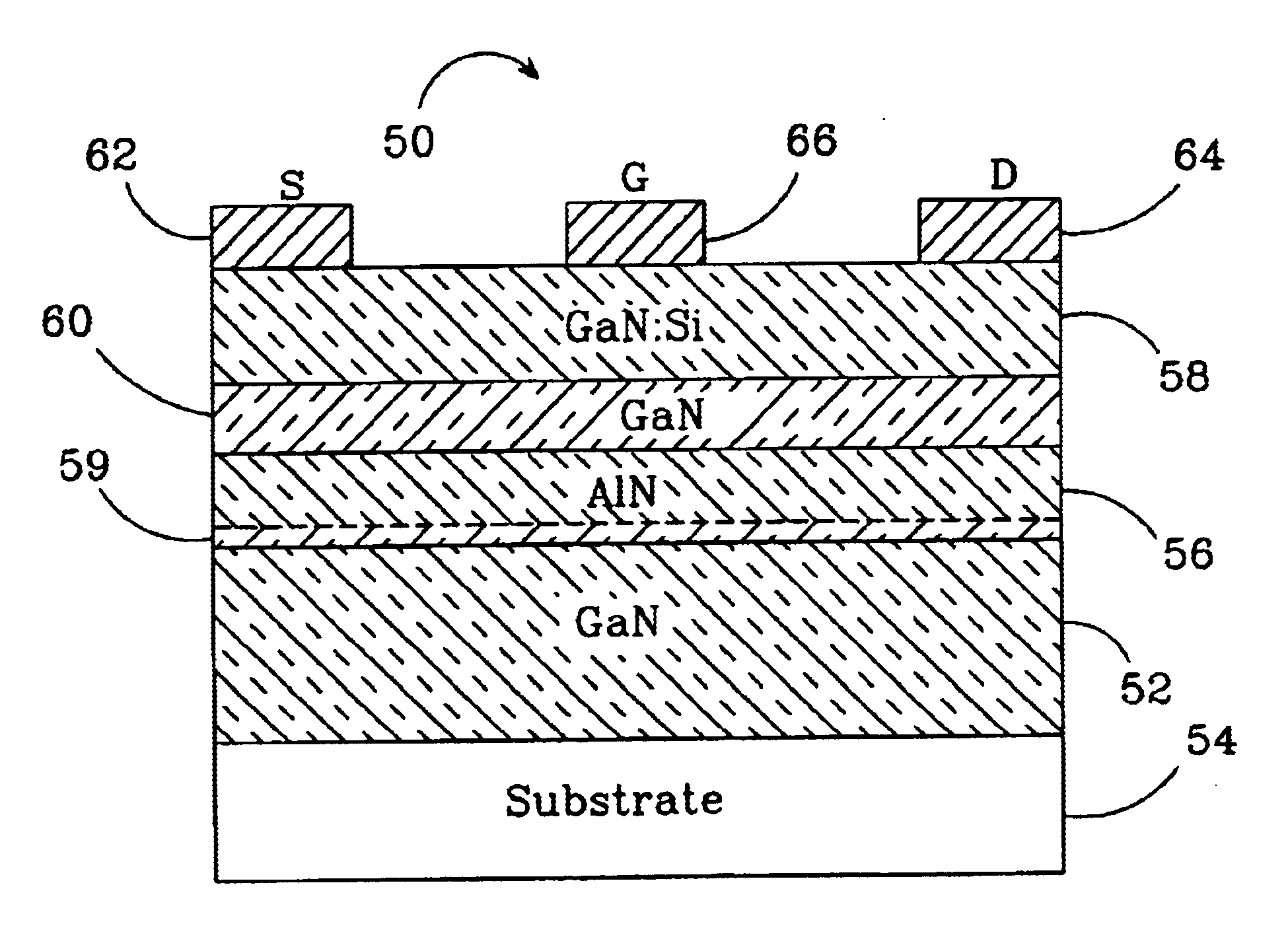Group-III nitride based high electron mobility transistor (HEMT) with barrier/spacer layer
a high electron mobility, transistor technology, applied in the direction of basic electric elements, electrical apparatus, semiconductor devices, etc., can solve the problems of low electron mobility, general limited mobility of 2deg, and degrade the high performance gain of si based hemt, so as to reduce piezoelectric scattering, keep the hemt gate leakage low, and high piezoelectric charge
- Summary
- Abstract
- Description
- Claims
- Application Information
AI Technical Summary
Benefits of technology
Problems solved by technology
Method used
Image
Examples
Embodiment Construction
FIG. 2 shows one embodiment of a HEMT 20 constructed in accordance with the present invention. It comprises a substrate 22 that can be made of different materials such as sapphire (Al2O3), silicon carbide (SiC), gallium nitride (GaN), or silicon (Si). The preferred substrate is a 4H polytype of silicon carbide. Other silicon carbide polytypes can also be used including 3C, 6H and 15R polytypes.
Silicon carbide has a much closer crystal lattice match to Group III nitrides than sapphire and results in Group III nitride films of higher quality. Silicon carbide also has a very high thermal conductivity so that the total output power of Group III nitride devices on silicon carbide is not limited by the thermal dissipation of the substrate (as may be the case with some devices formed on sapphire). Also, the availability of silicon carbide substrates provides the capacity for device isolation and reduced parasitic capacitance that make commercial devices possible. SiC substrates are availab...
PUM
 Login to View More
Login to View More Abstract
Description
Claims
Application Information
 Login to View More
Login to View More - R&D
- Intellectual Property
- Life Sciences
- Materials
- Tech Scout
- Unparalleled Data Quality
- Higher Quality Content
- 60% Fewer Hallucinations
Browse by: Latest US Patents, China's latest patents, Technical Efficacy Thesaurus, Application Domain, Technology Topic, Popular Technical Reports.
© 2025 PatSnap. All rights reserved.Legal|Privacy policy|Modern Slavery Act Transparency Statement|Sitemap|About US| Contact US: help@patsnap.com



